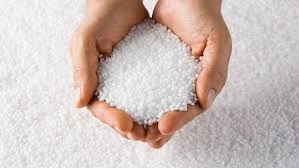Municipal Water Treatment Chemicals Ensuring Safe and Clean Drinking Water
The provision of safe drinking water is one of the most critical services offered by municipal authorities. To ensure that water is free from contaminants and safe for public consumption, a variety of chemicals are employed in the water treatment process. These chemicals play a vital role in purifying water and making it potable. Understanding the types of chemicals used and their functions is important for appreciating how municipal water systems work.
Coagulation and Flocculation
The first step in many water treatment processes involves coagulation and flocculation. Chemicals known as coagulants, such as aluminum sulfate (alum) and ferric chloride, are added to the water. These substances help neutralize the charges on suspended particles, causing them to clump together or agglomerate into larger particles known as flocs. The flocs are then removed from the water through sedimentation or filtration, significantly reducing turbidity and particulate matter.
Disinfection
Once the water has been clarified, it is essential to eliminate any harmful microorganisms that could pose health risks to the community. Disinfection is typically achieved using chlorine, chloramines, or ozone, each with its specific advantages. Chlorination is the most common method and is effective against bacteria and viruses. However, it must be carefully managed to avoid the formation of harmful by-products, such as trihalomethanes. Ozone, a powerful oxidizing agent, is also used for disinfection and can effectively destroy a broader range of pathogens, though it requires more equipment and handling precautions.
pH Adjustment
municipal water treatment chemicals

The pH level of water can significantly affect its corrosivity and the effectiveness of chemical treatments. Municipal water systems often need to adjust the pH to ensure optimal conditions for coagulation and disinfection. Chemicals such as sodium hydroxide (caustic soda) or sulfuric acid may be used for this purpose. Proper pH adjustment helps to minimize the leaching of metals from pipes, thus maintaining water quality and safety.
Clarification and Filtration
After disinfection and pH adjustment, the water is usually subjected to further clarification and filtration processes. Polymeric flocculants may be added to enhance the settling of particles and improve the efficiency of the filtration systems. Filtration methods, whether through sand filters or membrane technologies, remove remaining solids and contaminants, ensuring that the water is both clear and pure.
Additional Treatment Chemicals
In some municipal water facilities, additional treatment chemicals are employed to address specific issues. For instance, scale inhibitors may be used in hard water to prevent the buildup of minerals in pipes and treatment equipment. Additionally, corrosion inhibitors can be added to protect the integrity of the pipe infrastructure and prevent metal leaching.
Conclusion
The role of municipal water treatment chemicals is crucial in ensuring that the water supplied to households and businesses is safe for consumption. By employing a combination of coagulants, disinfectants, pH adjusters, and other specialized chemicals, water treatment facilities work diligently to provide high-quality water that meets public health standards. As technology and regulations evolve, so too do the methods and chemicals used, reflecting a commitment to continuous improvement in public health and safety.

